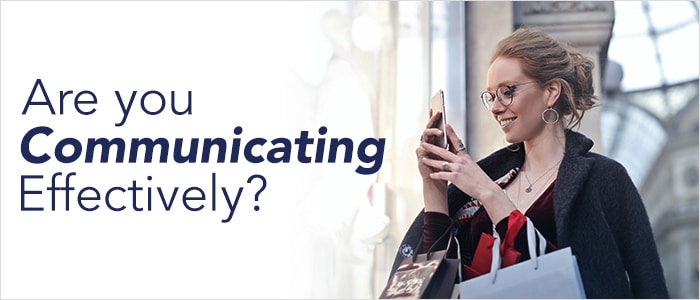With the holiday shopping season nearly upon us, many retailers are wondering how this year’s numbers will compare to prior years. Since 2020 has been such an anomaly, it is hard to forecast exactly what will occur. Many retail industry experts are still unsure of what will happen during this holiday shopping season, especially during what are normally high traffic shopping days like Black Friday 1.
Levi Strauss & Co. CEO and president Chip Bergh was quoted in a recent article saying, “I would actually rather leave a sale on the table—miss a sale—because we don’t have product than to have a glut of product that you then would have to markdown.”2 If our own experience tells us anything it’s that Mr. Bergh is not alone on this and many retailers share similar concerns.
While there is definite uncertainty around holiday shopping in 2020, one thing is clear: newer delivery strategies like contactless delivery, BOPIS (buy online, pickup in-store), and BOPAC (buy online, pick up at curb) will be the biggest drivers of success for retailers.
Get in the Game
Prior to the global pandemic, many retailers were not prepared to deliver on BOPIS or curbside methods. At the beginning of the year, major companies like Verizon and Dick’s Sporting Goods didn’t have a plan to initially launch curbside options but were forced to take the plunge in order to compete. Other retailers like Walmart, Target, Ulta, and Walgreens simply boosted their efforts to make their existing technologies more user friendly and attractive.
Barbara Kahn, a marketing professor at the Wharton School of the University of Pennsylvania, points out that BOPIS was being offered before COVID occurred, but the trend has been accelerated rapidly by the virus. “What we predicted would take two to three years to happen, happened in a few months,” she stated.1
Keith Anderson, senior VP of strategy at Profitero commented in a recent Supermarket News article that “digital commerce advanced eight years in eight weeks” and that “digital grocery sales grew at four times the rate of brick-and-mortar sales during March and April.”3
This growth in the grocery space was likely due to the fact that more consumers were stocking up their pantries and freezers amidst the pandemic and were cooking more at home in an effort to replace the dining out experience.3 According to Shoppingfeed.com, “the BOPIS model was already growing in popularity, but now it’s exploding as many retailers are using it as their main survival strategy during the Coronavirus crisis.”4
Some companies became even more innovative and attempted to offer delivery services and/or click and collect or curbside pickup, which is expected to grow by 60 percent this year to account for $58.5 billion in retail sales, ushering in a new wave of customer experience and expectations.
Some retailers, clothing retailers especially, embraced the dark store approach. Dark stores are retail store locations that have been transformed into temporary local shipping warehouses, which enables them to send local orders to customers faster.
Since retailers have been forced into offering these new technologies, there are likely going to be gaps in the customer experience. Contactless delivery and BOPIS are obviously growing in popularity among retailers and consumers alike. However, retailers need to find a way to capitalize on these newer opportunities to keep existing market share and even gain new customers without alienating their loyal shoppers.
“Retailers need to find a way to capitalize on these newer opportunities to keep existing market share and even gain new customers without alienating their loyal shoppers.”
Who’s in the Spotlight and Why?
Based on findings from a study conducted by Ipsos, the top two brands in BOPIS in the grocery category were Walmart and Target respectively, while the top brands in Curbside pickup for grocery were Sam’s Club and Kroger. They were highlighted as offering accurate fill rates on delivery orders, and clearly communicating with customers in various ways.5
Target in particular is performing exceptionally well amidst the global pandemic. Retail Customer Experience reports that “Target beat every analyst prediction regarding its latest quarterly earnings with its online business experiencing robust growth to the tune of 700%. The online sales zoom was due to the retailer’s curbside pickup service and the fact it drew 10 million new digital customers to its brand, according to a press release on the earnings.”6
Ipsos also found that Target had grocery orders ready when promised at 98% of visited locations and they lead in the apparel category, due to clear, visible signage directing consumers to the in-store pickup area posted at 83% of locations.
While online, BOPIS, and BOPAC are still growing in popularity, there are still shoppers who want to browse in person. In recent years, showrooming has become an issue for retailers. This is where a consumer comes to physical stores to investigate products but buys them elsewhere online for less money. An even newer phenomenon is ROPO (research online, purchase offline), which is essentially the opposite of showrooming. Whether a majority of your store sales are from foot traffic or web traffic isn’t as important. What matters most is offering a consistent and seamless experience across each channel.7
Stay in Touch from a Safe Distance
Clear communication is essential in a strong BOPIS strategy. Across the board, customers are looking for clear communication, but more than a quarter of all pickup and delivery shoppers say there is room for improvement in this area. The Ipsos study mentioned previously stated “when it comes to brands offering delivery, order accuracy is critical, and 9% of shoppers say their order was not accurate.”
One of the main reasons Target has exceeded expectations is they offer very simple instructions posted all over their locations. For example, they have simple, easy to read signs at a majority of their locations which include directions on how to download their app. They also are filling orders accurately. Other retailers can follow Target’s example and reap similar rewards. Make sure your message is clear and concise, and don’t be afraid of over-communicating with your shoppers; they are actually expecting MORE communication as these new technologies and delivery methods are embraced.
How Retailers can Win this Holiday Season
Customer loyalty is more important than ever, and you can’t afford to alienate loyal shoppers. Order fulfillment must be accurate and timely. This means in-stocks must be maintained for high demand items and out of stocks should be clearly communicated before a customer attempts to make a purchase.
When it comes to the holiday season, retailers should strive to capture as many sales as they can without ordering excessive inventory. This is easier said than done, especially in the wake of COVID-19. A strong retail partner offering machine learning and AI-powered solutions is a must if you are going to avoid excessive markdowns in late December.
Retailers should keep their social media strategy in line with their BOPIS and curbside strategies. You can leverage social media to “let people know about seasonal store sales and include promo codes to tempt customers to make in-store purchases” during this holiday season.7
At the end of the year, the most successful retailers will be the ones who can clearly communicate with customers, offer accurate deliveries and fill rates, and keep the most important products in stock. This all starts with having a strong supply chain solution that is built on machine learning and AI. Perhaps the most important supply chain strategy for retailers in 2020 is a strong Demand Planning solution that can still deliver the right forecasts, driving the right product levels to the right store or DC locations. Find out how you can improve your supply chain and keep the right products in stock so you are ready for the holidays.
Sources:
- Curbside Pickup, Delivery and E-Commerce Will Define Retail’s Next Chapter: 5 key takeaways from Ad Age Next: Retail
- 7 Ways Brick-and-Mortars Can Conquer Covid-19 Challenges
- Riding the Center Store Wave: As the Pandemic Changes Shopping Behaviors, Retailers Are Experiencing Peak Sales in Center Store -Both Online and in-Store
- How Retail Brands Are Adapting Strategies Around COVID-19
- New Study From Ipsos Unveils Brands Best Adopting In-Store Pickup, Curbside, and Delivery Offerings
- Target Sales Zoom, Hitting All-Time High
- Use Digital Platforms to Drive In-Store Traffic, and Vice Versa: Online and Offline Environments Are No Longer Competitors for the Same Retail Customers
[/et_pb_text][/et_pb_column][/et_pb_row][/et_pb_section]


